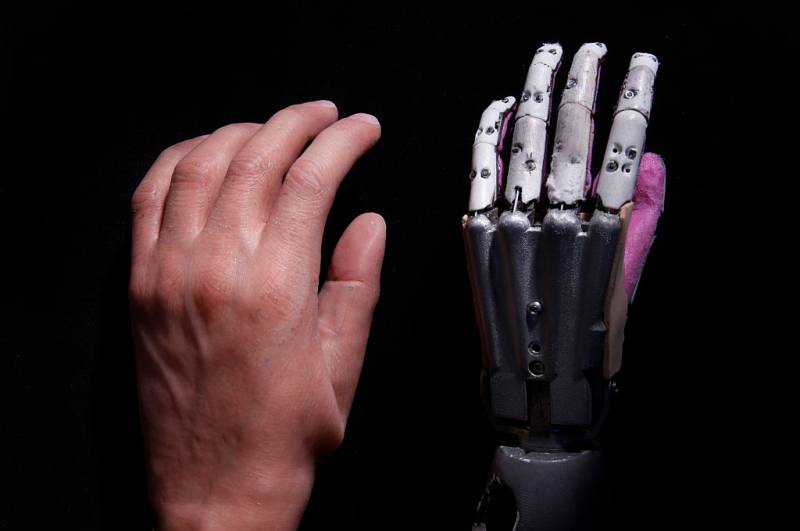When writer Britt Young, who was born without most of her left forearm, got an expensive, high tech myoelectric prosthetic four years ago she was so excited she threw an “arm party”. But the prosthetic was heavy and hard to use and she hardly ever put it on again. In an article in IEEE Spectrum, Young says the media and the tech world have been seduced by whiz-bang prosthetic technology at the expense of what most disabled people really need: access, reliability and affordability. “We are caught in a bionic-hand arms race” she writes “ It’s time to ask who prostheses are really for, and what we hope they will actually accomplish.”
Is the Bionic-Hand Arms Race Leaving Behind the Disabled People it’s Meant to Help?

BEDARIEUX, FRANCE - JANUARY 05: A close-up of French company RECFrance's Bionics TITANIUM hand made with Titanium, Aluminium and Kevlar on January 5, 2015 in Bedarieux, France. The bionic hand was designed to be the closest to a human hand in functionality; combining its lightness, biomechanics organization and sensory devices to give a wide variety of options when handling objects of all forms and weights up to 80 kg. The degree of movement is currently the hightest in the commercial area of hand prostheses. Each hand has a look all of its own, which is why each hand has a texture, colour and shape similar to the patient's hand. (Photo by Patrick Aventurier/Getty Images)
Guests:
Britt H Young, writer, "The Bionic-Hand Arms Race" in IEEE; PhD candidate in Geography, UC Berkeley
Sponsored